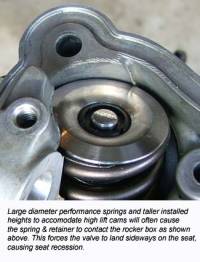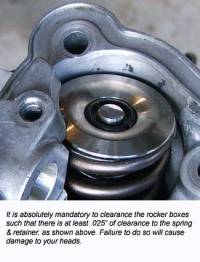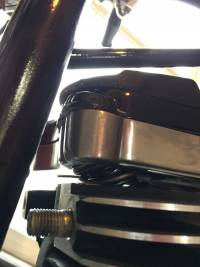Table of Contents
This is an old revision of the document!
EVO: Engine Mechanicals - Sub-04B
Rocker Box / Rocker Arm Inspection and Repair
Upper Rocker Box / Cover (All)
Pull the tops and look for little marks on the inside. 1)
There shouldn't be any outside of factory casting marks.
Rocker or pushrod contact will appear as marks that shouldn't be there.
If any are found, a little strategically located grinding cleans it right up.
Occasionally, 536 cams can cause the rocker arms to hit the rocker box tops (on the pushrod side).
This is rare, but it can happen.
Contact here should cause any damage, but it'll cause noise and leaks. 2)
A lot of rocker box top leaks have been traced to this.
| Rocker box top damage 3) | |
 |  |
Middle Rocker Box Spacer (86-03)
Lower Rocker Box / Cover (All)
Check for clearance issues between the valve spring / collar and the rocker box. 4)
When running big springs and cams, the additional lift can run the springs into the inside edge of the rocker.
In that case, the rockers should be clearance for the bigger springs.
This is more than just a nuisance noise. It will cause valve seat recession.
This means pulling the heads and changing seats, an expensive proposition.
That's one of the nice things about the 7mm valves with beehive springs in the late heads, it eliminates this problem.
| Lower rocker damage from valve spring impact 5) | ||
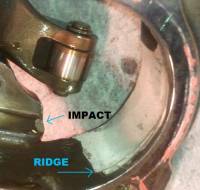 | 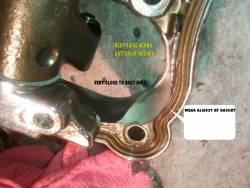 | 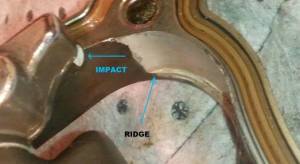 |
Valve spring clearance is a very common issue with high performance straight wound springs. 6)
Back before we went to beehive springs, this was a major headache for us.
People would lose valve seal and swear up and down they clearanced their rocker boxes adequately.
But later on, we'd get their rocker boxes and find spring/retainer gouge marks in them.
No matter what we did, we just couldn't get people to take it seriously.
If those springs hit the insides of the rocker boxes, you WILL get recessed valve seats, not maybe.
This issue went away when we migrated to beehives, thankfully.
It was a major motivating factor behind finding beehives that would work.
But they're not really suitable for all applications in HD motors.
Of course, now we're moving beyond beehives to the next great thing.
What you're looking for is to make sure the spring cannot contact the side of the box.
The clearancing can be done with a drum sander on a dremel type rotary tool 7) or a die grinder.
The clearancing job doesn't have to be pretty.
You're just looking to create space for the springs to miss the rocker.
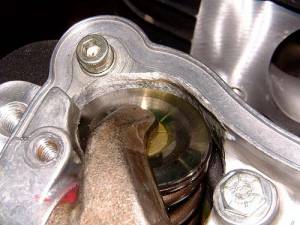 11)
11)
Rocker Arms
The exhaust side rocker arms have one tiny little hole that the intake rockers don't have. 12)
This tiny little hole is for extra oiling for cooling exhaust side.
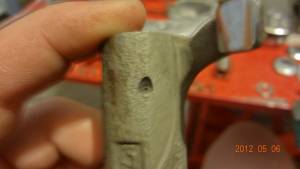 13)
13)
| Rocker Arm Specs: | |
| Shaft in bushing (loose) | .0005“ - .0020” (.013 mm - .051 mm) |
| End clearance | .003“ - .013” (.08 mm - .33 mm) |
| Bushing fit in rocker arm | .004“ - .002” (.10 mm - .05 mm) |
| Rocker Arm Shaft Specs | |
| Shaft fit in rocker cover | .0007“ - .0022” (.018 mm - .056 mm) |
The rocker arm shaft is not supposed to move from it's installed position.
It has a notch in one end that goes around a bolt used to install the lower rocker box to the head.
What moves is the rocker arm itself.
It pivots around the rocker arm shaft.
The shaft runs through bushings on both ends of the rocker arm.
These bushings can expand due to normal wear.
Check the I.D. of these bushings when you have the shaft out.

